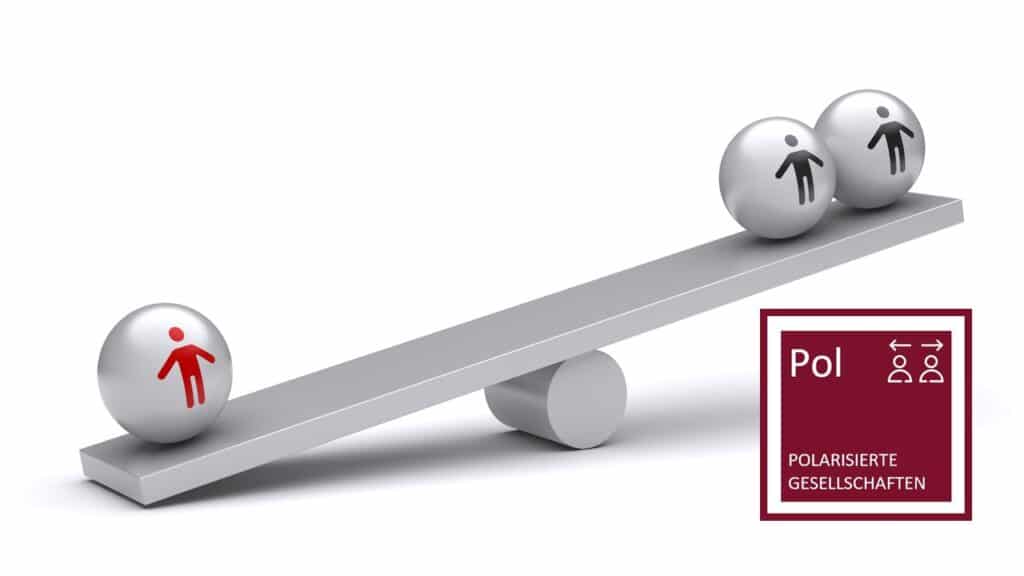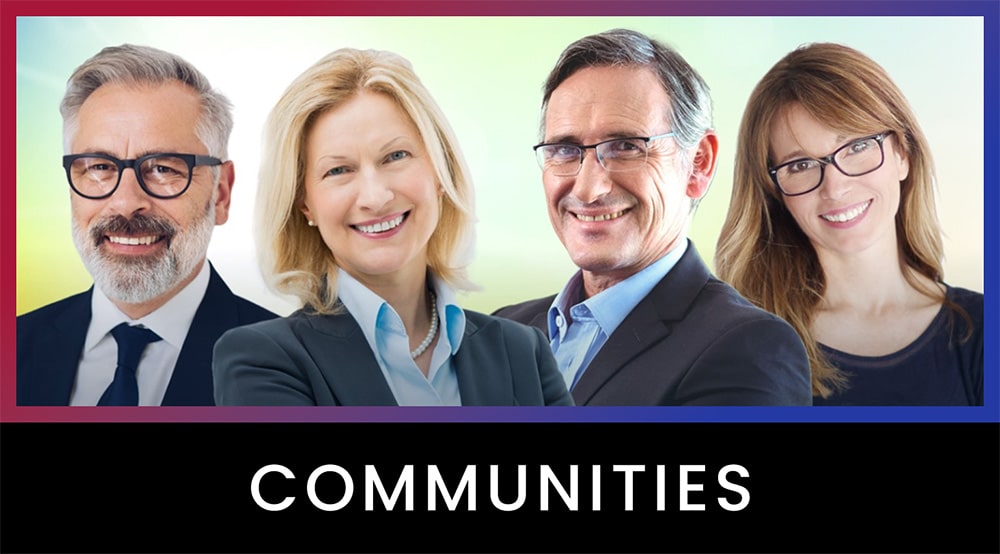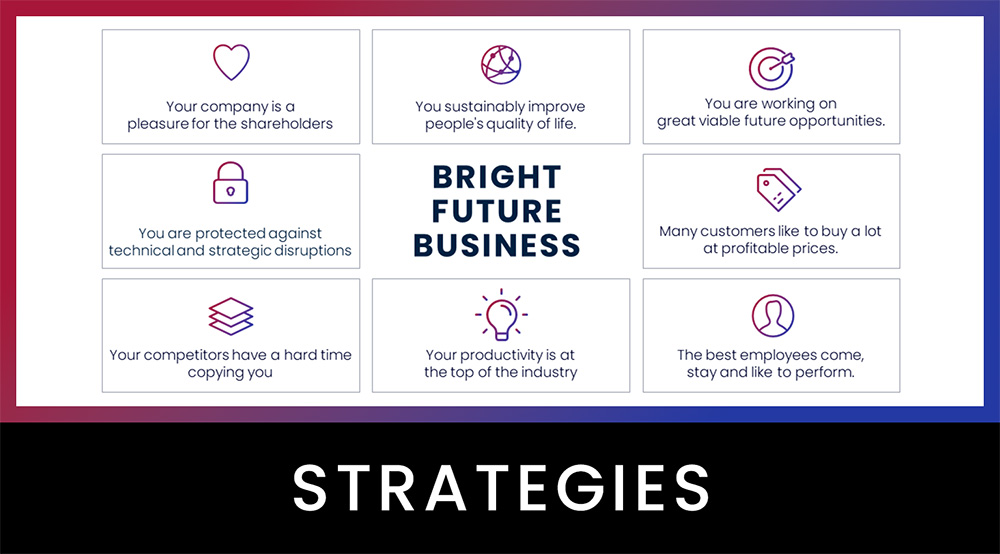Megatrend Polarized societies
From the FMG Trend System: For your future-proof company
Polarized societies – understanding dynamics
In many countries, far-reaching social changes are emerging that are challenging the existing order. Polarized societies arise when opinions, attitudes and realities of life differ so greatly that social coexistence reaches its limits. These polarizations affect central areas of social life: political attitudes, economic participation, social justice and cultural affiliation.
For companies, this results in a complex framework for action. Polarized societies create areas of tension in which management, communication, product development and location decisions must react with increasing sensitivity to social trends. Those who understand these developments can make their organization more resilient and sustainable in the long term. To the overview of all megatrends

What do polarized societies mean for companies?
In polarized societies, expectations, loyalties and consumer behaviour are shifting. The social debate is increasingly influencing brand image, employer attractiveness and customer loyalty. Companies are faced with the challenge of navigating social tensions prudently without rashly assigning themselves to political or cultural camps. At the same time, they should take a stance where this is in line with their values and corporate culture.
At the same time, there are growing demands for social responsibility, diversity and communication. Organizations that anticipate social developments can build trust in a targeted manner and position themselves as future-oriented players.
In the following, we take a look at three key developments that are having a particularly strong impact on the polarization of modern societies, and at the aspects of these that are particularly relevant for companies.
- Societies are changing profoundly, in their structure, their values and their behavior. The megatrend of polarized societies is just one of many that could be relevant for the future of your business.
- FMG’s trend system makes these complex social developments tangible.
- In addition to megatrends from society, politics, the economy, technology and the biosphere, it also includes future factors as drivers of change.
- You can find out more about megatrends on our page Overview of all megatrends.
Key developments in pluralization
1. polarization of attitudes
The polarization of attitudes affects the way in which social issues are discussed and evaluated. Increasingly, irreconcilable positions are facing each other. Public debates are less characterized by dialogue, but increasingly by emotionality, outrage and moralization. Social media acts as an amplifier of these dynamics.
People no longer feel represented, withdraw into ideological echo chambers or become radicalized in their attitudes. In polarized societies, social fragmentation is growing as a result, with consequences for political culture, trust in institutions and the creative power of democratic processes.
Important aspects:
Increase in ideological camps: social debates are becoming more binary – spaces for dialog are shrinking.
Political fringes are gaining influence: radical parties and positions are gaining ground.
Media excitement economy: reach beats relevance – polarization becomes a business model.
Loss of trust in institutions: Authorities, political parties and the media are losing legitimacy.
Focus on conflict issues: migration, climate protection, gender roles, combating the pandemic and social justice divide opinion.
Parallel cultural public spheres: Different spaces of perception make a common understanding of reality difficult.
2. polarization of prosperity
While some sections of the population benefit from economic progress, other groups have a growing sense of economic dependency. The polarization of prosperity is reflected in the unequal distribution of wealth, income and life chances, both within countries and globally.
At the same time, social segregation is increasing: The wealthy are retreating into exclusive living environments, while disadvantaged groups have less and less access to opportunities for social advancement. The result: a fragmented society with growing potential for social conflict, particularly in urban areas.
Important aspects:
Increasing concentration of wealth: A growing proportion of wealth is concentrated in the hands of a few.
Shrinking middle class: economic security is becoming more fragile, opportunities for social advancement are declining.
Regional differences in prosperity: Rural areas are at risk of falling behind economically.
Gender inequality: gender pay gap and care work remain key challenges.
Social segregation: Neighborhoods and living spaces are growing apart – integration is becoming more difficult.
Loss of economic confidence: If people feel that performance is no longer rewarded, their approval of the existing economic order dwindles.
3. polarization of equal opportunities
When education, opportunities for advancement and participation are unequally distributed, a society loses its integrative power. Polarized societies experience that access to opportunities increasingly depends on origin and social status, not on performance or potential. This applies in particular to education, but also to digitalization, healthcare and political participation.
While well-connected, resource-rich groups benefit from change processes, others fall behind. This leads to growing mistrust and new forms of exclusion, including in the corporate context.
Important aspects:
Educational inequality: Origin determines future – social mobility stagnates.
Digital divide: Technological competence is becoming a key factor for participation.
Unequal health opportunities lead to increasing differences in life expectancy and quality of life between different population groups.
Generational imbalances: Young people feel disadvantaged by demographic structures.
Representation gaps: Political and economic elites do not reflect social diversity.
Experiences of discrimination: Minorities experience structural disadvantage in everyday life.
Conclusion: Understanding polarized societies strategically
Polarized societies arise from imbalances in opinions, power and participation.
Companies are increasingly caught between social expectations and economic realities.
Polarization shapes consumer behaviour, employer attractiveness and innovative strength.
Resilient organizations promote dialogue, diversity and trust.
- With the Future Radar Program, you can identify areas of social tension at an early stage and develop viable opportunities for the future.



































